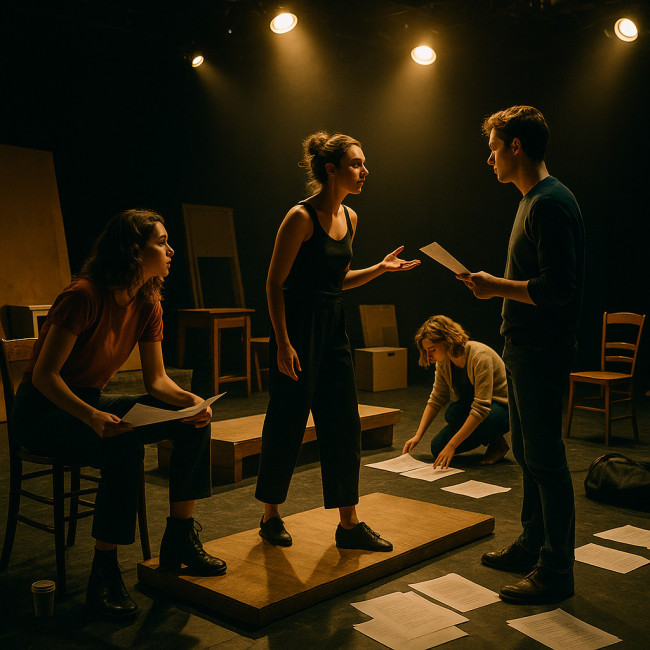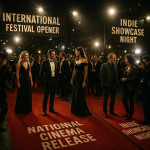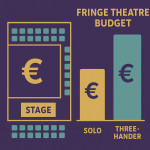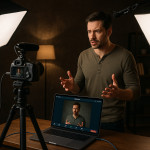Showcase planning: creating buzz months before talent scouts fill the room
A sold-out showcase does more than generate applause—it opens doors to auditions, bookings and long-term representation. Learn how to reverse-engineer your event timeline, rally an audience of decision-makers and keep momentum flying after the last bow.
The hidden ROI of early showcase planning
Waiting until the venue is booked to think about outreach is the fastest way to face empty seats. Starting six months in advance lets you:
- Secure high-demand venues before festival season price hikes hit.
- Layer marketing touchpoints so scouts see your name at least seven times—the average needed before they act.
- Schedule rehearsals around cast conflicts instead of squeezing scenes at 1 a.m.
- Attract sponsors who offset production costs by up to 40 % when pitched early.
Month-by-month showcase planning roadmap
| Timeline | Main Objectives | Key Metrics |
|---|---|---|
| 6 months out | Define creative concept, set budget, shortlist venues | Concept deck sent to 3 venues |
| 5 months out | Lock venue, recruit production crew, outline marketing plan | Venue contract & 5 crew agreements signed |
| 4 months out | Film teaser, design press kit, soft-launch save-the-date | 500 teaser views, 50 RSVPs |
| 3 months out | Pitch media, invite agents, launch ticket page | 15 press mentions, 30 % tickets sold |
| 2 months out | Release behind-the-scenes clips, confirm sponsors | 75 % budget covered, 60 % tickets sold |
| 1 month out | Final rehearsals, drip daily social posts, run paid ads | 90 % tickets sold, ad CPA < €2 |
| Debut week | Send reminder emails, prepare welcome packs | 95 % confirmed attendance |
Marketing channels that build buzz early
Owned platforms
Turn your Artfolio event listing into a hub: embed rehearsal reels, add press quotes and update ticket availability in real time.
Earned media
Journalists love exclusives. Offer first-look rehearsal access or an interview with your director. Aim for three tier-one outlets and seven niche blogs.
Paid reach
Retarget past attendees on Instagram and LinkedIn. A €200 test usually delivers a cost per click below €0.75 when creatives feature rehearsal snippets.
Relationship assets
Warm intros still work. Adapt the proven formatting tips from high-performing agent emails to personalise each scout invitation.
Crafting a guest list talent scouts can't resist
- Curate, don't mass invite. Limit seating to 120 and reserve 40 % for decision-makers.
- Segment messaging. Casting directors receive scene breakdowns; producers get ROI stats.
- Include peers. A room buzzing with actors signals momentum—use networking mixer tactics to convert them into amplification allies.
Rehearsal & production mastery

Your showcase is a micro-production in every sense—budget lines, crew roles, production meetings and rigorous tech rehearsals mirror what happens on a TV pilot. By adopting a film-set mentality early, you set clear hierarchies, mark dependencies and reduce day-of chaos. Aim for shot-list level precision: know how every lighting cue, music swell and set transition will play on both the live audience and the cameras that immortalise the performance. When the entire team can recite timing to the second, confidence radiates from the stage and reassures scouts that you are already operating at professional scale.
- Table read + blocking (T-60 days)—lock timing to the second.
- Costume & lighting test (T-45 days)—record on the actual stage to fine-tune cues.
- Invited dress rehearsal (T-7 days)—run feedback forms so you can trim dead air.
For camera-ready looks, revisit the fundamentals in online profile optimisation; the same visual consistency applies on stage.
Day-of execution checklist
- Arrive 4 hours early for a full tech run.
- Hand scouts a one-page cast sheet with QR codes linking to magnetic portfolios.
- Brief front-of-house on VIP seating; a smooth entry is a positive first impression.
- Capture content: a two-camera setup yields social clips within 24 hours.
Post-showcase follow-up: turning applause into contracts
Speed matters. Email personalised thank-yous within 12 hours and include a link to the full recording. Data from Eventbrite shows engagements drop by 65 % after the first 48 hours.
Use a CRM or simple spreadsheet to track responses, auditions booked and representation meetings scheduled. Aim for a 30 % conversion from scouts contacted to next-step conversations.
Source : Eventbrite Event Budget Report
Common pitfalls to avoid
- Over-programming. Keep runtime under 70 minutes. Scouts rarely stay past the first hour if schedules are tight.
- Late RSVPs. Send calendar invites immediately; last-minute confirmations drop attendance by 20 %.
- Ignoring accessibility. Provide step-free access and captioned video teasers. It widens potential press and agency reach.
Quick self-test: Are you showcase-ready?
FAQ
- How big should my showcase budget be?
- Most emerging acts allocate €7 000–€15 000. Use the 35/25/20/10/10 split in the chart above as a guide.
- Do I need press if scouts are attending?
- Yes. Press coverage signals credibility and amplifies your reach beyond attendees.
- What's the minimum lead time for venue booking?
- In major cities, prime black-box theatres book out 5–6 months in advance.
- How can I track RSVPs efficiently?
- Pair a free CRM with unique RSVP links for each segment. You'll instantly know who opened, clicked and confirmed.
- Is filming the showcase essential?
- Absolutely. Scouts rewatch standout moments and share them internally. Quality video also fuels social proof.











